Hearing loss may affect people of all ages and can range from mild to profound. It can be temporary or permanent and its effects vary depending on which part of the ear is involved.
The three main types of hearing loss are conductive, sensorineural and mixed. Each type requires different management strategies. Common challenges include trouble hearing people in noisy environments or needing to turn up the volume on the TV or radio.
Many people develop hearing loss gradually over time, particularly with age or repeated exposure to loud background noise. Others may experience sudden deafness due to trauma, infection or inner ear dysfunction.
Fortunately, with the right treatment, many forms of hearing loss can be successfully managed or improved. A treatment plan may involve hearing devices, hearing implants or other surgical intervention. At Complete ENT, our team can discuss the right treatment plan for you.
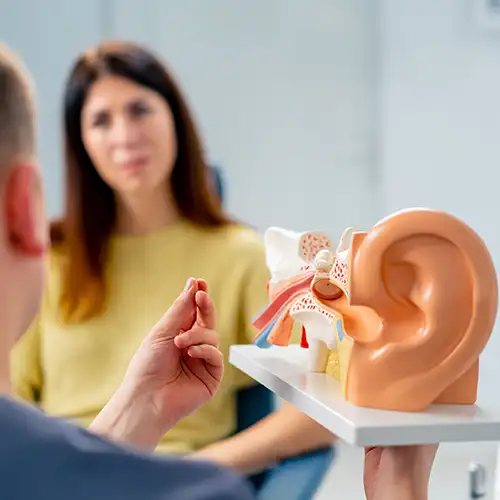
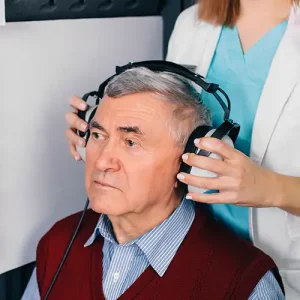
Sensorineural hearing loss is caused by damage to the inner ear structures or auditory/hearing nerve. It can be related to aging, noise exposure, medications or certain medical conditions.
Conductive hearing loss occurs when sound is blocked in the outer or middle ear. Common causes include earwax build-up, fluid including infections or abnormal bone growth.
Mixed hearing loss involves both conductive and sensorineural components.
Sudden-onset hearing loss refers to a rapid decrease in hearing ability, occurring over a short period, typically within 72 hours.
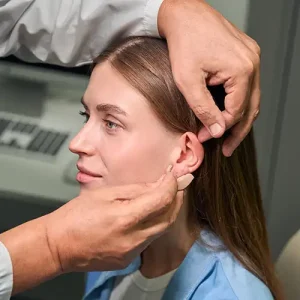
Sensorineural hearing loss (SNHL) is the most prevalent form of permanent hearing loss, resulting from damage to the inner ear (cochlea) or the auditory nerve pathways that transmit sound signals to the brain. This condition can develop gradually over time or occur suddenly. If occurring suddenly it requires prompt medical attention to optimise outcomes.
SNHL can arise from various factors, including:
Individuals with SNHL may experience:
Diagnosis of SNHL involves a comprehensive hearing assessment, including:
To reduce the risk of SNHL:
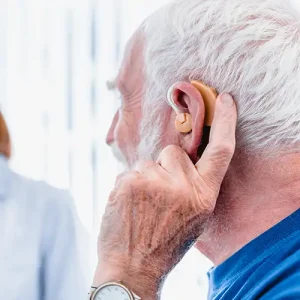
Conductive hearing loss occurs when sound waves are impeded from reaching the inner ear due to issues in the outer and middle ear. Unlike sensorineural hearing loss, which involves damage to the inner ear or auditory nerve, conductive hearing loss often results from physical obstructions or abnormalities.
Conductive hearing loss often leaves residual hearing intact and is often treatable. Understanding the underlying causes is essential for effective treatment.
Conductive hearing loss can arise from various factors, including:
Individuals with conductive hearing loss may experience:
A thorough evaluation by an audiologist or ENT specialist is crucial. Diagnostic procedures may include:
At Complete ENT, we provide expert diagnosis and management of hearing loss in children, from infancy through adolescence. Paediatric hearing loss may result from ear infections, fluid in the middle ear (glue ear), congenital conditions or temporary blockages such as wax. Early detection is vital to support speech and language development, learning and social skills.
Our team is experienced in working with children and offers:
If you’re concerned about your child’s hearing, our Cairns and Brisbane Paediatric ENT specialists are here to help.

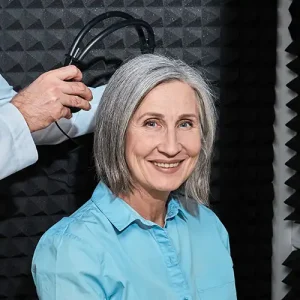
Treatment depends on the underlying cause and the type of hearing loss. Your treatment may include one or more of the following:
Sudden loss of hearing is characterised by a rapid loss of hearing, typically in one ear, occurring over a period of up to 72 hours. It is considered a medical emergency, and immediate evaluation by an ear, nose and throat (ENT) specialist is crucial. Prompt treatment can improve the chances of partial or full recovery.
Treatment Options:

Hearing loss surgery is not universally required for treating all cases. The necessity for surgical intervention depends on the specific type and cause of hearing impairment. A thorough evaluation by an audiologist or ENT specialist is essential to determine the most appropriate treatment approach.
Surgical intervention is often effective in conductive hearing loss treatment, especially when caused by:
Sensorineural hearing loss results from damage to the inner ear or auditory nerve pathways. While most cases are not amenable to surgical correction, certain interventions may be considered:
Mixed hearing loss involves both conductive and sensorineural components. Surgical treatment may address the conductive aspect, while hearing aids or cochlear implants manage the sensorineural component.

At Complete ENT, our team of Cairns and Brisbane-based ENT specialists are conductive and sensorineural hearing loss specialists. If you’re experiencing hearing difficulties, we encourage you to book an appointment. Early assessment leads to better outcomes, and your journey toward improved hearing starts here.
No matter what causes hearing loss for you, Complete ENT can develop and manage your treatment plan. Whether you’re experiencing trouble hearing people, have persistent difficulty hearing in background noise or have been told you need a hearing test performed, we’re here to help.
We Offer:
Our team is dedicated to providing comprehensive and compassionate care for individuals experiencing hearing loss. Our team of highly qualified otolaryngologists (ENT specialists) offers a full spectrum of diagnostic and treatment services tailored to both adults and children.
Our multidisciplinary team comprises specialists with subspecialty interests in various aspects of ear health. This collaborative approach ensures that each patient receives care from a specialist best suited to their specific condition.
Complete ENT operates multiple clinics across South East Queensland and Cairns, ensuring accessible care for our patients.


Call us on
07 3905 5999